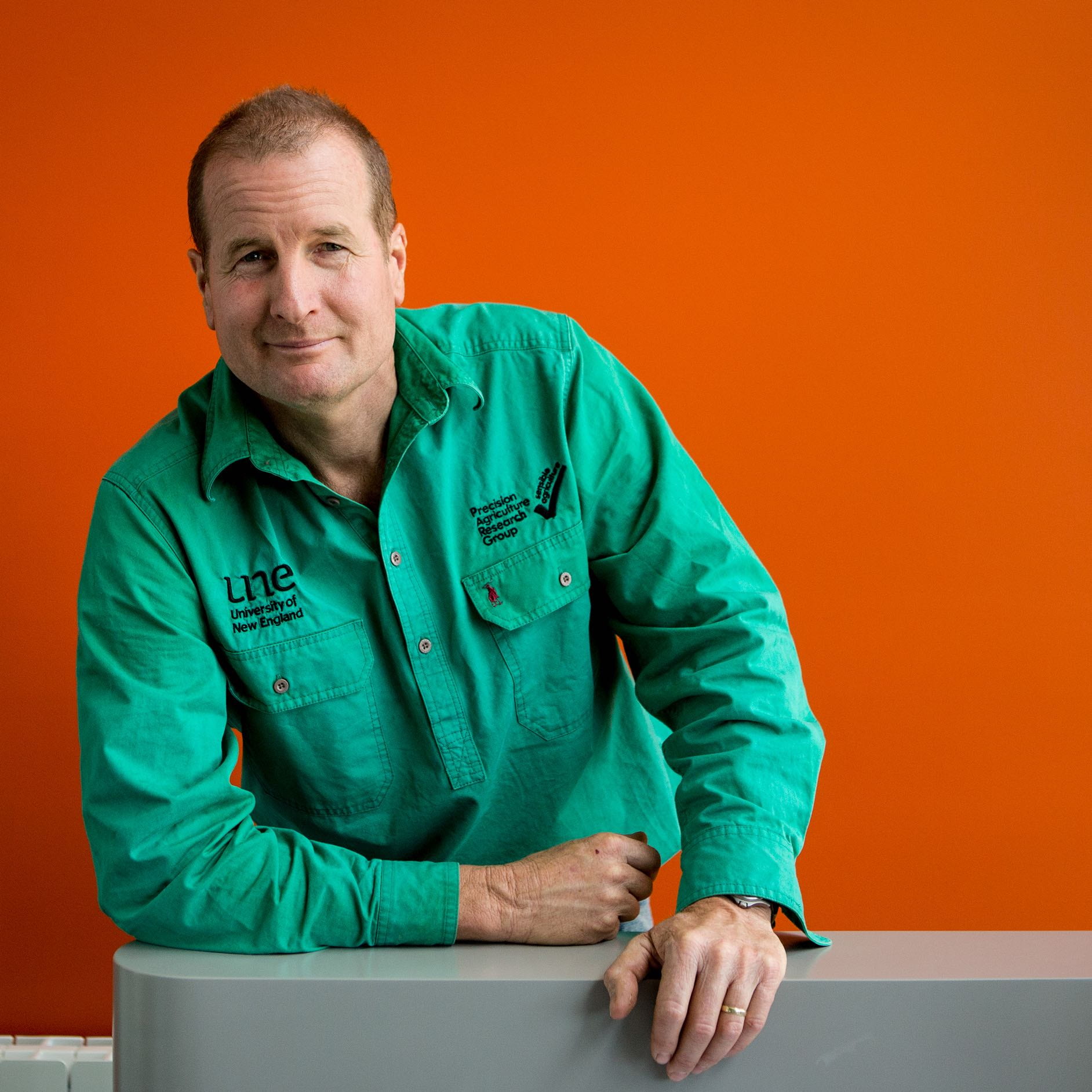Dave Lamb has seen the future, and it’s Agile.
As Chief Scientist of the Food Agility CRC (of which UNE is a partner), Professor Lamb has been deeply immersed in the world of agile management principles that the CRC is based on.
Agile principles have been around for three decades. They were developed within the software industry to guide a “fail fast and iterate” innovation process, but have been adapted and adopted by some of the world’s largest corporations.
Prof. Lamb believes that it’s time for universities to start weaving agile principles into their processes.
“Unis have been historically insulated from the shocks that affect other sectors, but we’re now seeing that they are as exposed to volatility as other markets,” he says. “Incorporating agile principles into the university system will make us more adaptive and flexible in a time when the only certainty is change.”
So what is agile management? Out of a sea of definitions, Prof. Lamb focuses on one thing: agile is “mission-focused”.
“Universities are never short of stated missions,” he says, “but it’s how they execute them that matters.”
Under agile management, after a goal is identified, the best resources and expertise are sought from around the organisation – regardless of groupings or hierarchies – and put to work towards achieving the objective. “Leadership then morphs into a servant role, backing the teams, unlocking the people and resources necessary to deliver on the mission. Workforce silos are redundant.”
Agile is also unafraid of failure, Prof. Lamb says. “Failure is critical – providing you treat failure as a form of learning that you incorporate into the next iteration of your endeavour.”
“People often find accountability scary, because accountability carries with it the prospect of being punished for failure. Under agile management, failure is pretty much on an equal footing with success. It’s a powerful learning and improvement tool.”
Agile is also a system that’s big on reporting. All 28 people on Prof. Lamb’s Food Agility CRC team gather virtually for a daily ‘standup’ session. It takes 10 minutes. “It’s not about droning through your diary entries – you’re there to quickly tell the team your key objectives for the day and identify what resources you need, or who within the team is critical to you achieving them. It’s about committing to what you intend to achieve, not what you intend to do.” Few team meetings are permitted to run over 30 minutes, except for special cases like briefing new stakeholders.
Prof. Lamb sums up the key attributes of the agile process in three words: cadence, commitment and collaboration.
Cadence refers to the agile idea that teams should work fast, without being too hung up on detail, on one aspect of the overall goal. Once that aspect is developed, it is tested for flaws. Any problems are worked out in a rapid new build, testing is repeated, and the team either moves onto the next part of the project, or builds and tests again. The cycles of build, test, repeat-or-move-on build a cadence to the work that prevents projects becoming stale, Prof. Lamb said.
Commitment is developed because the best people for the job are put onto the task, regardless of their ranking in the business hierarchy. “A base-grade lecturer with special expertise could be running a project with notionally higher-grade staff on their team. In universities, the wrong person is too often given the wrong role simply because its in their job title.”
Because everyone is fitted to their purpose, and because the process is always moving, and there is no fear of failure, Prof. Lamb has experienced a liberation of energy among those working the agile way.
Collaboration is built into the agile model, because each person has their own area of expertise that all other members of the team rely on in order to progress the project. Work-in-progress meetings are genuine exercises in determining how pieces of the project jigsaw are fitting together.
These attributes, and other aspects of the ever-evolving agile philosophy, have persuaded Prof. Lamb that agile concepts have a home in universities like UNE.
“It’s not simply a matter of dropping agile into our working environment. Because we’re a public entity spending public money, and we have complex accountability systems, it would have to be developed as a sort of hybrid with our existing university systems and processes,” he says.
“It won’t be easy: we have typically built processes top-down. Existing leadership structures are often cautious to the idea of agile management, because it appears to threaten the status quo – and more importantly, it appears to threaten the status of those at the top.”
“But the rewards can be substantial. Firstly, you discover the organisation is able to respond to opportunities and challenges more quickly. Secondly, you put to use all the hidden skills and talents in the organisation that are presently locked away in siloes.”
“Management only needs to look around at the world’s successful businesses to see what others have accomplished with agile methods.”
Reaching back to his roots as a physicist, Prof. Lamb describes the effect of transitioning people and organisations to agile principles in terms of a nuclear reaction.
“First you have to put a huge amount of energy into breaking the bonds that hold things in stasis; but when you’ve broken the bonds, you release proportionally far more energy that becomes available to drive the organisation forward.”
“Personally, I think agile methods are going to be key to building ‘UNE 2.0’ for the future.”

